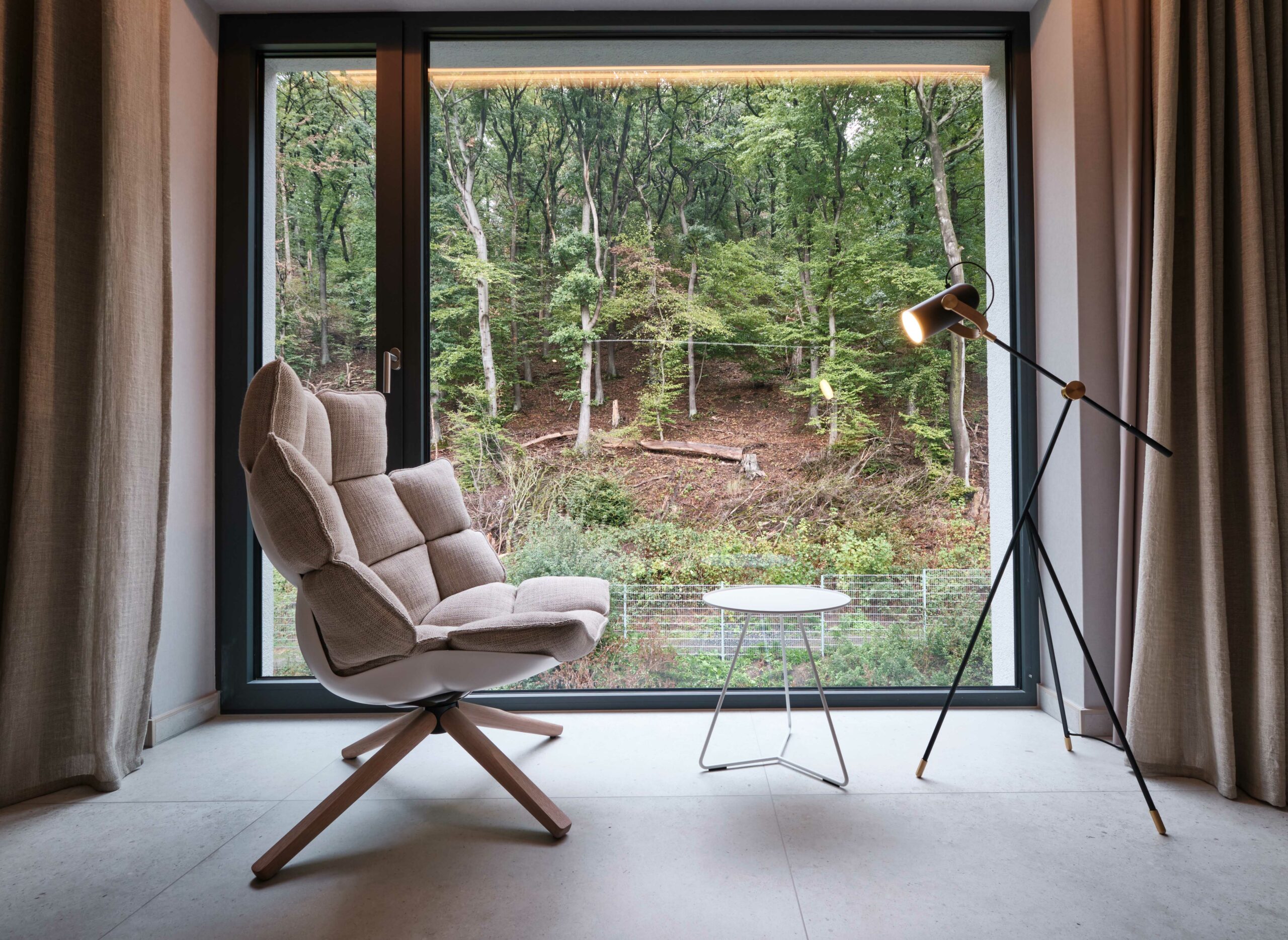We recently spoke with Corinna Kretschmar-Joehnk, founder of JOI-Design and a member of the jury for the LIV Hospitality Design Awards. With a wealth of experience as a university lecturer and co-author of several design books with her husband and partner, Peter Joehnk, Corinna has established her studio as a European leader in interior architecture. JOI-Design specializes in creating exceptional spatial and product designs for international hotel destinations, with a new focus on innovative floating hospitality experiences for the cruise industry. Based in Hamburg, the team is dedicated to shaping luxurious atmospheres for both global properties and independent boutique hotels, as well as vibrant lifestyle brands. Join us as we explore her thoughts on hospitality design and the future of the industry.
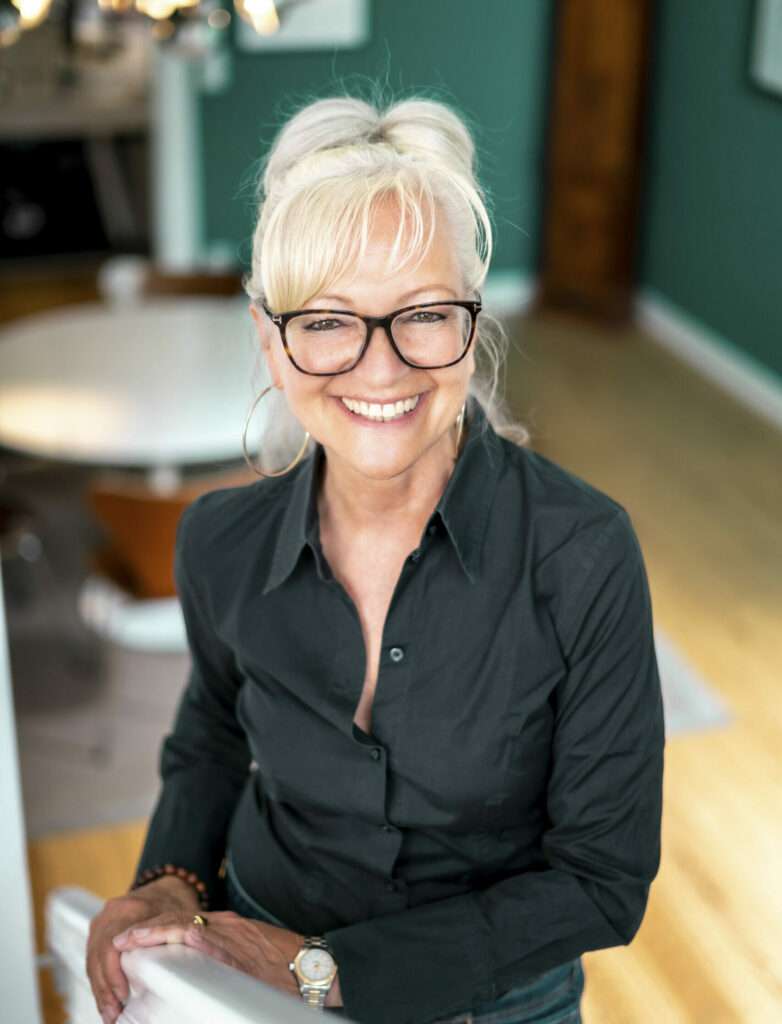
Can you tell us about your background? Where did design first make an appearance in your life and how did you follow it?
Both of my parents were musicians. My mother was a pianist and my father a singer – a tenor – and both taught students in their master classes at a musical high school in my hometown. So my brother and I were raised in a household full of creativity: my parents’ students sometimes stayed overnight, there were often house concerts, and we, of course, also learned to play instruments, the two of us. But there was a special point where I was sure I would love to be creative but not ‘just’ for a moment on stage (after practising within my own four walls for hours every day). Even today I still love concerts, but I discovered another way to express my creativity, one that lasted longer than just a moment in time. I chose art as the main subject for my Higher School Certificate, first studying art history. Then, early on, changing to interior architecture – as this had already been my secret dream for a long time. In the end, it was my mother who encouraged me to go in this direction, because at first, I wasn’t sure if I should ‘only’ do something that, in my opinion, contrasted so deeply with music. My parents could touch the hearts of their audience with their music and help people feel better. But my mother convinced me to do what I loved, pointing out that the living environments I created would also help people feel better. Plus I loved to draw and sketch – when studying, I was already sure this was my dream job! And it still is.
What would you say is your personal design philosophy and how has it evolved throughout the years?
Arising from this wish to design nicer environments that help people feel better, my personal goal and mantra (I am a passionate yogi) has always been to design as a human for other humans. The only way this has changed is when my business partner and husband Peter and I founded our own studio with our maxim that we, as a team, are a group of individual personalities designing hotels for groups of other individuals. The sense of ‘humanity’ has always been my focus, so I’ve remained loyal to what I wished for from the very beginning. To me, this is what it’s all about, making the world a better place, step-by-step, each day. And, of course, this process is always evolving since each day we confront different, ever-changing circumstances and challenges.
Can you tell us about the story behind the creation of your studio JOI-Design?
JOI-Design – looking at the name, this is a nickname, an acronym of ‘joehnk. interior design’ – the company we come from and which has our surname ‘Joehnk.’ Hospitality design has always been in our DNA and is a topic we enjoy focusing on. We love this industry, although it is challenging due to budgets, and of course time schedules, since everything is based on a certain return on investment. When designing ‘signature’ office spaces – which in recent years have become a new pillar of our portfolio now that once-separate living environments merge ever-closer together – we often experience more creative freedom. Sometimes these are ‘once in a lifetime’ projects for a brand where return on investment doesn’t play as important a role, plus clients are willing to wait a little longer for everything to be exactly right to best represent their company’s identity.
But we love hotels! We love their vibe – locations where people from all over the world meet and mingle, and get inspired. Peter founded the company 40 years ago. I joined as an employee in 1993 and – to make a longer story short – we joined forces and together founded the studio with the JOI-Design nickname to continue what Peter once started. The longer version of the story also includes a bankruptcy 20 years ago when ‘9/11’ made us unsure that we could overcome the crisis of no one wanting to build hotels anymore. Hard and uncertain times… But we didn’t lose our positivity: we started anew, from scratch, and together – the two of us. And somehow it all fell into place. Step by step, we could grow again. We learned the lesson that you have to stay true to your own values. You have to stay honest and that is all you need! For example, one client said to us – and we loved it, “It’s not your company that doesn’t exist anymore – it’s you – it’s all in your heads – and I want you!” So it turned out not to be a problem that our former company no longer existed. And therefore we started again, changing our company to our nickname.
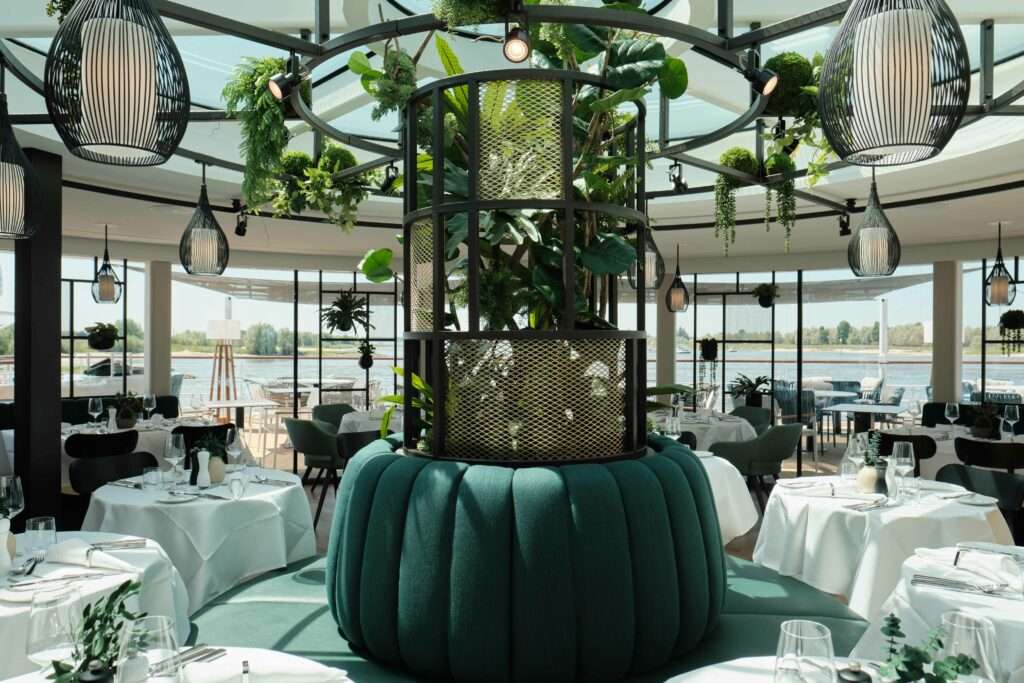

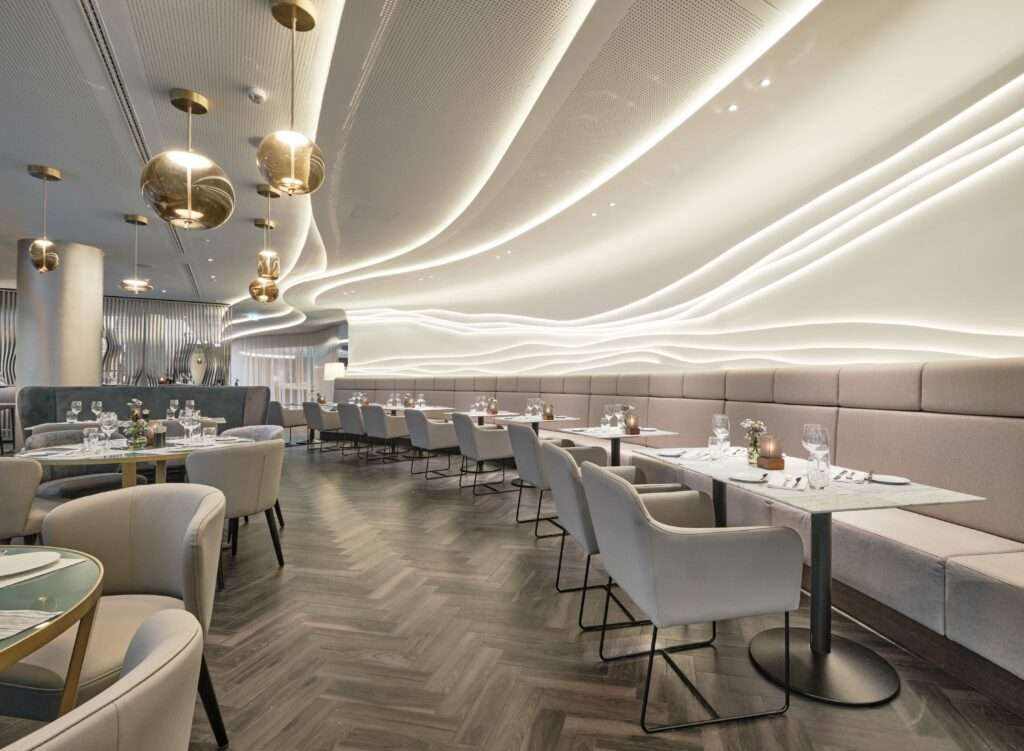
Your studio is known for shaping luxurious atmospheres for a variety of properties. Can you describe some of the biggest projects you’ve worked on and the process your team follows to create a new design?
We began with smaller boutique hotels before moving into the design of more complex developments. Although these privately owned boutique destinations were our foundation, we still treat every larger project as an individualised concept and not part of, for example, a larger hotel chain.
Some of our key projects in recent years—though this is just naming a few, which isn’t easy as each project becomes our favourite—include:
A big resort in the south of Germany, the hotel ‘Der Öschberghof,’ where we worked on a complex renovation, revitalization, and extensions. It features a 5,000-square-meter spa, various individual dining options, a large inspiring conference space, and, of course, very special guestrooms and suites inspired by the surrounding countryside.
The second project I’d like to mention is quite the opposite: an urban hotel in our hometown that is just as luxurious as the countryside resort. The Fraser Suites Hamburg involved the major conversion of a former office building, made even more challenging by its earlier use as a tax office, which was designed not to feel inviting but to command respect from the local citizens who paid their taxes there. This listed monument, built 100 years ago, revealed hints of its past in the form of floor tiles unearthed during the renovation. These guided us toward our new design concept, reawakening the spirit of the building’s construction era with inspiration from the Roaring Twenties. This project presented a different challenge: accompanying this ‘grand dame’ into her next chapter by adding new layers, polishing what was worthy of preservation, and giving her a bit more sparkle to become a luxurious hotel.
My third example of our recent work is a small but lovely jewel on the island of Sylt—known as the ‘Hamptons’ of Germany. The ‘Söl’ring Hof’ has only 15 guestrooms and suites, all unique, with some being maisonettes. The hotel has a strong culinary focus, run by a talented young chef and a creative sommelière. We began our renovation step-by-step, first revamping the fine dining restaurant—which has already received two Michelin stars—by giving it a new soul and character while increasing interaction between guests and the restaurant team for an immersive culinary experience.
How do we work? We always deep-dive from scratch as we launch into new adventures: our team is experienced with the topic of ‘hotels’ – so this is our base and foundation – and then from there we can play and always invent something new that works because we stick to certain rules a hospitality project should follow: of course these have to do with time and money (which, as I mentioned before, are sometimes different for office projects) – but for us, this also means being sustainable by picking materials that are durable and endure.
This leads me to one more final project that we recently completed, the creation of a new hotel brand whose DNA is based on ESG principles: THE USUAL, with the first in this new hotel chain having just opened in Rotterdam. It’s already shortlisted for some awards because it is special and new. It took all of us – the client plus our team of designers – to identify certain boundaries and recognise that overall, the hotel industry is still not where it should be with sustainability. It lacks overall guidelines comparing what is truly sustainable and what is not – there are so many different points to consider. But in the end, we created something special – that’s for sure – and we are really happy that on top of all that, we have created a space where social interaction is encouraged and openly wanted. This became really crucial to our plan, because it, too, is very sustainable since its effects will last – it’s not just about materiality. So the circle closes: designing being humans for humans.
Apart from luxury hotels, your studio also works with the cruise industry. How did JOI-Design enter this niche, and what are the challenges this area encompasses when compared to land-based hospitality projects?
There are two reasons we entered into this new field: one was that Peter, in his early years, founded a company that focused on designing for the cruise industry – so he already has a degree of experience, but then he stepped away a long time ago to concentrate on ‘his’ hotels again. Also, I worked for a client and a hotel in South America, in Chile. This client became COO of a cruise line and then, 20 years after our first project, called me and asked, “Are you interested in bringing your experience from land-based hotels to the cruise industry?” Of course, I was!
Naturally, there were challenges: a ship is made of steel instead of concrete and bricks. Weight plays a bigger role, space is more limited, and above all, the rooms’ ceiling heights are not that high. Fire and life safety must be considered differently. And that’s only to name a few of the differences… In the end, though, on cruise ships, we create inspiring living spaces that make the clients of our clients feel better – like they’re in a hotel on land. Concerning creativity, the most different starting point is that at the beginning, we don’t have a location to reference – because the ship is moving from port to port. But this is a very nice challenge too – and we’ve already found some answers…. Challenges keep us alive.
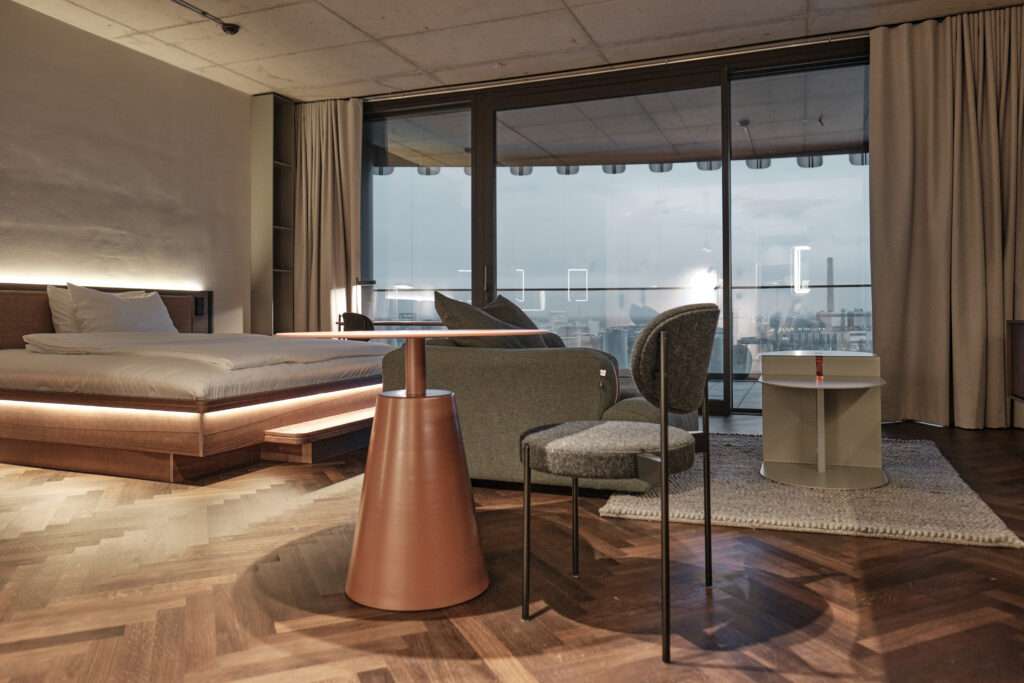
During your lectures at universities, what key lessons do you emphasize to prepare the future of design for success?
I always preach: love what you do! Then you can be the best! Stay curious and think sustainably!
Can you tell us about a particularly memorable project you’ve worked on that you still think about to this day?
I would say one of our initial boutique hotels that is owned and run by a lovely couple in the Black Forest: it’s called ‘Hotel Ritter Durbach’. We already had a project in common, a hotel on the island of Rügen in North East Germany where they were general managers but didn’t own it. A few years later, they called and told us they’d bought their own hotel in the south, and from then on, we created everything collectively with super teamwork. They brought in their ideas and we fought about budgets together – because most of the time, nicer things are more expensive – but they had just begun their business and had to look after their money. However, the result was simply stunning! Everybody was happy! They even gained a Michelin star with their fine dining restaurant and were so successful that they built an extension (also designed by us). And yes, and we are still connected.
As a jury member for the LIV Hospitality Design Awards, what do you prioritize when evaluating designs?
I don’t have a recipe or strong rules. It’s like when we’re brainstorming at the beginning of a project and starting to create the story: I always ask – does the story touch your heart? Is it relevant for our times and the demands of society? And then is there a strong emphasis on sustainability on top of that?
What do you envision for the future, both for yourself and for the broader design community?
I would love to see more collaboration across the whole scene! Teamwork makes the dream work – and we all can be stronger. We also discovered this when cooperating on special projects with colleagues from other firms in our interior design circle. You always learn and gain so much! This is the future for me. We are not made to ‘fight’ for us alone.






